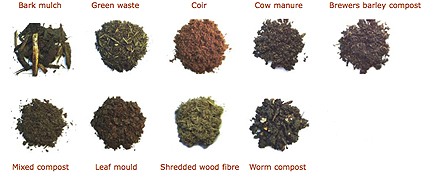Peat may be dirt cheap, but it costs the earth. Peat extraction is killing Ireland’s raised bogs. Already, Ireland has lost 90% of its raised bogs to commercial peat extraction, turf cutting and forestry. 14 sites designated as Natural Heritage Areas and Special Areas of Conservation have been damaged by moss peat mining. Current policy in Ireland in relation to the production of moss peat products is such that companies in this business are not required to restore the peat forming vegetation of the raised bog habitat once they have removed the moss peat. This means that industry involved in the production of moss peat in Ireland cannot be described as responsible or sustainable. Of the peat moss harvested in Ireland, 66% is used by amateur gardeners. The remainder is used by professional horticulturalists. Such is the demand for moss peat, that countries which have used all of their indigenous supplies of this natural resource will resort to importing moss peat from other countries. In this way the moss peat industry is a driver of habitat and biodiversity loss throughout the world, especially if restoration of peat forming vegetation is not a built in requirement of the harvesting programme. If you are a gardener, the message is simple – the plants that need peat are the wild ones which live in bogs, not those in your garden. Peat free gardening begins with you. It’s time to kick the peat habit and help save bogs by following the IPCC’s peat-free plan. Please make the switch today.
The Myth
Traditionally, peat has been used as a soil conditioner; its rich black-brown colour surely meant it was very fertile; it held water and appeared to be the right texture for breaking up heavy soils. Or so it was believed by lots of gardeners.
The Reality
Peat is virtually devoid of plant food and is highly acidic. It may be sold as a good sowing and potting compost but so are the peat-free alternatives. Peat is not the best product to use for mulching and soil conditioning.
Moss Peat
Moss peat is made from the partly rotted remains of the Bog Moss or Sphagnum plant. More than 14 species are found in Irish bogs. Using peat compost is one of the most environmentally damaging activities that the gardener can undertake.
Peat Free Gardening Zones
A few years ago a gardener could find very little but peat in garden centers. Now there is a choice of alternatives available that don’t threaten our finite raised bogs. Every bag of peat-free coconut fibre, bark or composted waste material sold means that a bag of peat can stay where it belongs – in the bog! Change your gardening habits to keep peat in the bog.
Choose an alternative peat free garden product in your garden centre and make a real difference to the future of our peatlands – without sacrificing your own garden’s flowers and produce. A variety of peat free mulches, soil improvers and growing media are available to suit the gardening job in hand.
Peat-free Alternatives for You to Buy, Make and Try
 As a mulch to conserve moisture and suppress weeds – you could try bark, spent mushroom compost, composted garden waste or leaf mould.
As a mulch to conserve moisture and suppress weeds – you could try bark, spent mushroom compost, composted garden waste or leaf mould.
As a soil improver – products based on wood-waste, spent mushroom compost, composted garden waste, leaf mould or well-rotted farmyard manure.
As a growing medium – a good quality coir or leaf mould compost for seeds or cuttings or one based on wood waste for pricking out and potting up.
You Can Make Difference

By gardening without peat and following IPCC’s peat-free plan below, the wild plants and animals that depend on the peat in the bogs can continue to survive. Here’s how you can make a difference:
- Make a donation to support the IPCC’s Peat-Free Garden Campaign – kicking the habit won’t come cheap
- Buy only peat-free soil improvers, composts and mulches
- Go peat-free in your garden
- Recycle your garden and kitchen waste to make your own compost and persuade others to do the same. Take the first step to keep peat in the bogs by clicking on this DIY Composting Link. If you don’t know how to do this why not join an IPCC composting course run in conjunction with Local Authorities every year
- Do not buy plants grown in peat moss
- Please inform IPCC if you suspect your local bog is being harvested for moss peat without planning permission and an integrated pollution control license form the Environmental Protection Agency. Submit observations you have made on a moss peat site here.
- Lobby your local TD the Minister for Culture, Heritage and the Gaeltacht to press for government action to protect raised bogs through the designation of sites of conservation importance and the wise use of peatland resources
- Ask the Minister for Communications, Climate Action and Environment to enforce planning controls on companies currently extracting moss peat on conservation worthy raised bogs and to do more to promote organic recycling
- Ask your local County Council to declare itself a peat-free zone and to do more to encourage the composting of domestic and garden waste
- Ask your local garden center to stock peat-free alternatives
Thank you for your support – and remember every bag of peat-free coconut fibre, bark or composted waste material sold means that a bag of peat can stay where it belongs – in the bog!
Text, Photographs and Images © Irish Peatland Conservation Council, Bog of Allen Nature Centre, Lullymore, Rathangan, Co. Kildare R51V293. Email: bogs@ipcc.ie; Tel: +353-45-860133.
